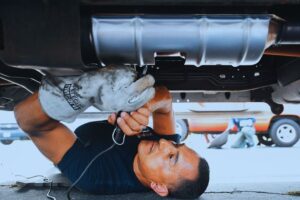Cam phasers on an engine allow the camshaft to be advanced according to engine needs. So it’s important to know when they go bad so you can get them replaced. What happens when cam phasers go bad?
When the cam phasers go bad, it can destroy the vehicle’s variable camshaft timing (VCT) system. The engine might not idle or start, and it will result in a bad camshaft.
Bad cam phasers may make loud and rough idle noises. In most cases, there is an annoying knocking noise. It will produce a loud tapping noise coming from the valves.
Read on to learn more about what happens when cam phasers go bad and other important info about cam phasers.
What Happens When Cam Phasers Go Bad?
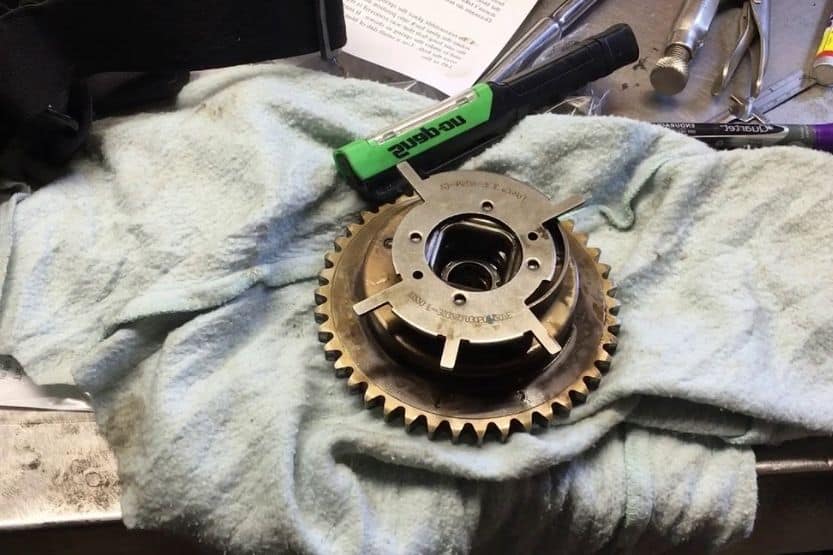
When the cam phasers go bad, they can badly destroy the vehicle’s variable camshaft timing (VCT) technology. It will also cause the engine ignition timing to be off — so off that it might not idle or start.
When your car or truck has a bad cam phaser, you will hear the following noises:
- There is a knocking, not to mention irritating noise; and
- It will produce a loud tapping noise too that’s coming from the valves.
So, will bad cam phasers damage the engine? The answer is yes. But to understand this better, we have to define what a cam phaser is and how important it is to your vehicle.
What Are Cam Phasers?
A cam phaser refers to a modern device intended for valve timing in a modern internal combustion engine. Cam phasers have two types, namely, the intake and the exhaust. These cam phaser types may seem identical, but they are, in fact, different in their orientation.
When assembling a cam phaser, all machining and finishing must be completed and accomplished to the right tolerances. Otherwise, the cam phaser will not function smoothly. This will damage the vehicle that will most likely lead to a costly repair.
Testing and documenting the assembly’s complex parameters are of great significance. Among the details are the following:
- You must set the correct pressing distance,
- All the parts must be properly attached to the correct phaser,
- The debris screen must be present,
- Press force must be correct, and
- Spring tension must be accurate.
Symptoms of a Bad Cam Phaser
In a typical scenario, worn cam phasers make a loud and rough idle. Oftentimes, a knocking noise is heard. There are also instances in which the noise does not result from the wear in the phasers.
Instead, it is caused by low oil pressure resulting from cam bearing wear in the cylinder heads. In which case, the heads need to be machined or replaced.
Ford Motor Company encountered an incident involving cam phasers in 2006. There was a noise, malfunction, and failure encountered with the variable camshaft timing phasers on Ford’s 5.4 L V-8 engine.
The company, however, has since then issued a statement. It explained the service and repair procedures that Ford intended to do to address the issue.
Ford F150 Cam Phaser – Symptoms and How to Replace
What Happens When Cam Phasers Fail?
When cam phasers fail, they can badly destroy the vehicle’s VCT. It can cause the engine’s timing to fail to idle or start as the VCT goes out of warm-up mode.
Bear in mind that if you are replacing a malfunctioned VCT, you have to make sure you use the appropriate cam phaser. Changing a bad VCT but not changing the associated cam phaser will not help you address the issue. Sad to say, the result might even be worse.
If you are asking if it is important to replace cam phasers, the answer is certainly yes. But you don’t just simply replace it and assume that the issue has been resolved. Along with the replacement of the cam phasers is the need to also replace the cam.
Otherwise, the cam phasers will still not function correctly. This might eventually cause engine damage. Even if you have completed the repair, the engine will not run correctly.
How Much Does It Cost to Replace Cam Phasers?
The cost to replace bad cam phasers ranges between $550 and $850. This is if you prefer to have it replaced elsewhere and not in a dealership. Otherwise, be prepared to pay more. In a dealership, the cost of cam phaser replacement ranges between $1500 and $3000.
Importance of Cam Phasers to a Vehicle
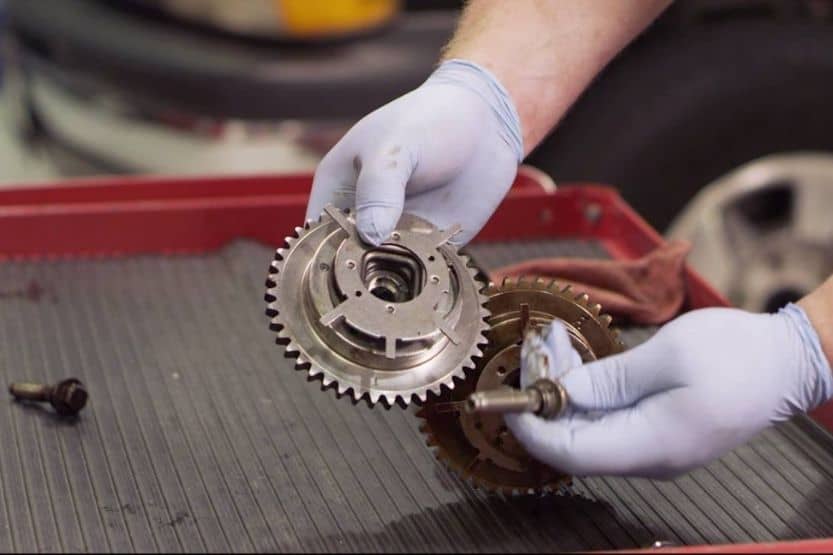
In most cases, the character of an engine involves several factors:
- How far its intake and exhaust valves open;
- How long the valves stay open; and
- How long the interval is when they open and close.
Try to open the valves wider than usual for a longer period of time. You will get loud noise and high-rpm horsepower. If you try to create a narrow valve opening for only a few seconds, it will produce different results.
It will result in lower emissions, superior fuel economy, good low-rpm torque, and a steady idle.
The Camshaft Controls Valve Timing
Typically, a camshaft controls valve timing in all aspects. This is possible involving carefully calibrated lobes. These lobes are responsible for pushing the valves open at the appropriate time.
The cam phasers significantly control an aspect of this cam timing. The position of the camshaft is relative to the crankshaft as well as the pistons attached to it.
Try to turn or advance the cam relative to the crankshaft slightly. This will cause the valves to open and close sooner, corresponding to the piston’s movement coming up in the bore. This movement results in a civilized engine. However, it is not ideal for top-end horsepower.
If you retard the cam, it means that you are turning it to make the valves open and close in a late manner. Doing so is ideal for horsepower. But it is the worst movement for everything else.
In the early years of engine building, engine builders would have to set a certain amount of cam retard or advance. You can sometimes do this by moving the entire cam sprocket gear, either a tooth backward or forward, on the timing chain.
Other times, it would be done using aftermarket adjustable camshaft sprockets. These sprockets can be turned using a computer-controlled servo motor.
Instead of simply setting a particular amount of retard or advance, the computer-controlled servo could advance the cam or cams at low rpm to improve driveability. Simultaneously, the computer-controlled servo could retard the cam or cams at high rpm to augment horsepower.
Cam Phasers Minimize or Maximize Valve Overlap
Furthermore, these cam phasers can be applied to dual overhead cam engines to change positions and make them relative to each other. You can do this with one cam for the exhaust valves and the other cam for the intake valves.
This process could then minimize or maximize valve overlap. When we say valve overlap, it is the amount of time that the exhaust and intake valves open and close in a simultaneous manner.
If there are fewer valve overlaps, it then results in a more efficient and civilized engine. If there are more valve overlaps, this then assists with high rpm horsepower.
By this time, you already know that it can badly destroy the vehicle’s variable camshaft timing (VCT) system when the cam phasers go bad. The engine’s timing might not idle or start, and it will result in a bad camshaft.
Bad or worn-out cam phasers may make loud and rough idle noises. In most cases, there is a knocking, not to mention annoying noise. It will produce a loud tapping noise coming from the valves.
Cam Phasing vs. Variable Duration
Cam phasing is described as the simplest form of variable valve timing (VVT) process. To reiterate the cam phasing process, the camshaft phase angle is rotated either forward or backward, correlative to the crankshaft.
This process allows the valves to open and close either earlier or later. It is not possible for the camshaft duration and lifts to be solely altered using a cam phasing system.
To define VVT, it refers to the method of altering the valve lift event’s timing. It is used to enhance a vehicle’s quality in terms of emissions, fuel economy, and performance. There is an increased VVT process application, which goes hand in hand with variable valve lift systems.
There are various methods to achieve the VVT process. It can be through mechanical devices. But it can also be through electro-hydraulic systems. As emissions regulations become increasingly stricter, automotive manufacturers have started adapting to the VVT systems.
Cam Phasers Go Electric
Let’s take a look at these electric cam phasers of the 2019 Nissan Infiniti QX60 midsize crossover vehicle:
As automotive manufacturers exert their efforts to enhance internal combustion engine efficiency, more functions have started to switch from mechanical to electrical. The camshaft-phasers are no exception.
These devices at the end of the camshafts allow the exhaust and intake valves to vary. This is a significant process for performance enhancement. It minimizes emission issues. Moreover, it allows the engine to run smoothly and flawlessly.
Up until now, oil pressure is the one that has been activating cam phasers. However, when the oil is thick, and the engine is cold, there is a slowness in how cam phasers react. This then causes the engine to work with more difficulty when pumping the oil.
The Schaeffler Group engineers attempted to address this. Fortunately, they succeeded with the development of electric cam phasers. These cam phasers respond more quickly and minimize oil pumping losses.
2019 Nissan Infiniti QX60
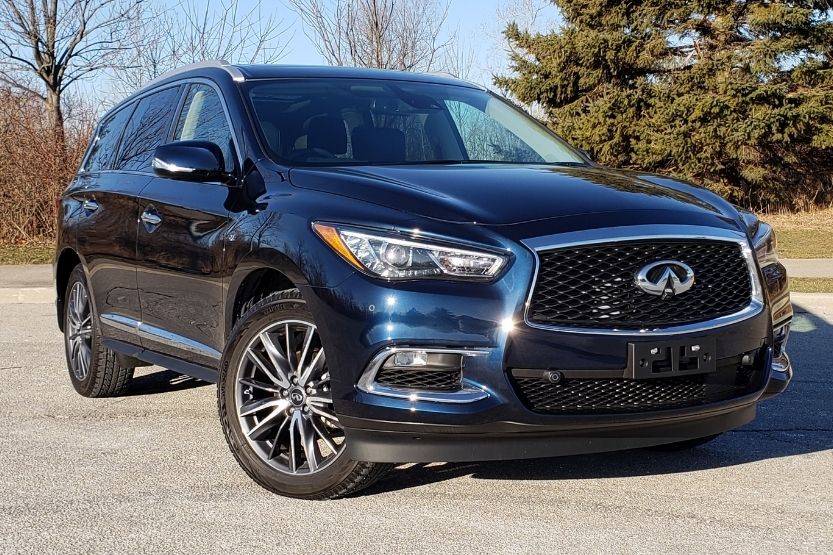
They successfully integrated electric cam phasers in the 2019 Nissan Infiniti QX60 midsize crossover vehicle. The Infiniti luxury division incorporates electric cam phasers on the V-6 engines. This includes the 3.5 L 2019 Infiniti QX60 crossover.
Electric cam phasers have an additional benefit — and a major one for that matter. Once the engine is turned off, the cam phasers can position the valves for smoother, faster, and far more efficient starts.
This outcome is particularly advantageous for hybrid vehicles. Furthermore, it is also advantageous for vehicles featuring stop-start systems.
When asked about these electric cam phasers, Schaeffler senior product development engineer Andrew Mlinaric stated that their company did not want to wait anymore for oil pressure to improve to operate the cam phasers.
Instead, the company would want to be in the most advantageous position right at the beginning.
He added that their main objective is to provide comfort. By integrating electric cam phasers into their hybrid vehicles, they get to make the engine start-up as quickly as possible.
Now, you have an idea about the importance of cam phasers to the vehicle.
Conclusion – Will Bad Cam Phasers Damage the Engine?
When the cam phasers go bad, they can wear out the vehicle’s variable camshaft timing (VCT) technology. The timing of the engine might not idle or start as it will result in a bad camshaft.
Worn cam phasers create loud and rough idle noise. In most cases, there is a knocking, not to mention irritating noise. It will produce a loud tapping noise too that’s coming from the valves.
Having explained to you the importance of cam phasers to vehicles, you now have a clearer idea why worn cam phasers will have a terrible impact on vehicles. So, if you notice unusual noises involving the cam phasers, it is best to have them repaired or, better yet, replaced.
It is, of course, advisable to check the camshaft because worn cam phasers may also mean broken camshafts. Most importantly, the best thing to do is diagnose the vehicle’s variable camshaft timing system fully.
Related reading:
Valve Lash – What Is It and Valve Lash Adjustment
Rod Bearing [What is It, How to Replace It, and Replacement Cost]


![Driving With a Bad Purge Valve [What Happens? Signs and Symptoms] driving with a bad purge valve](https://roadsumo.com/wp-content/uploads/2022/02/driving-with-a-bad-purge-valve-150x150.jpg)
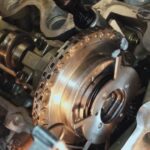
![Best Dash Cam [Top 12 Dash Cams for Car or Truck] best dash cam](https://roadsumo.com/wp-content/uploads/2021/07/best-dash-cam-150x150.jpg)


![Read more about the article CV Shaft [CV Axle Shaft Explained – And When to Replace]](https://roadsumo.com/wp-content/uploads/2021/12/CV-shaft-300x200.jpg)

